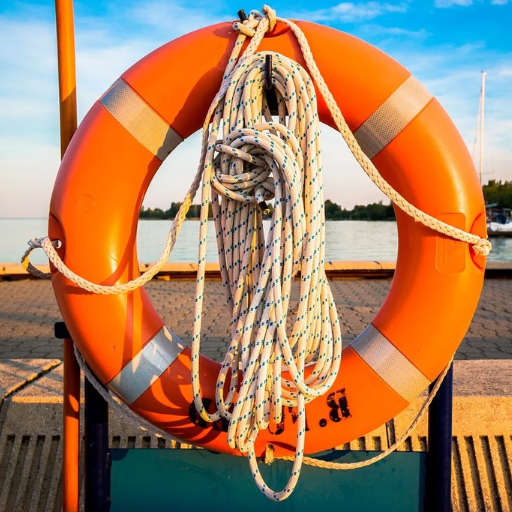
New technological innovations include the development of new gadgets that address how society approaches safety and health. From personal emergency response systems to state-of-the-art medical devices, the survival rates and quality of life have drastically improved. This article highlights a specific set of life-saving gadgets for life-or-death situations, looking into their technology, practical use, and impact on modern life. These devices are meant not just to avert catastrophe but also to act actively during times of peril to prop up life. Understanding them will give readers insight into how progression slows down the disastrous outcome.
What Are the Essential Life-Saving Equipment You Should Own?
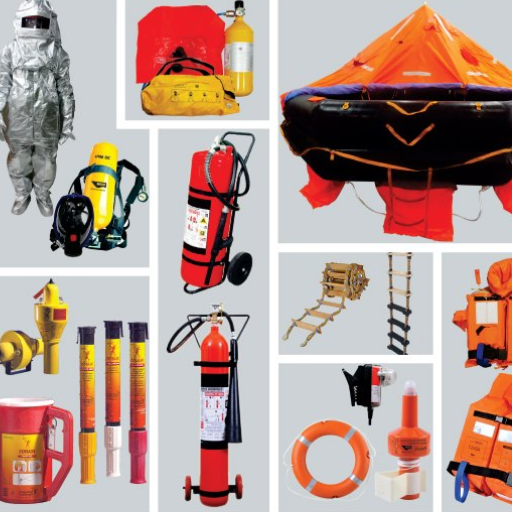
1. First Aid Kit
A portable first aid kit may be essential in resolving injuries immediately after one is encountered in an emergency scenario. Things like bandages, antiseptics, painkillers, and even medical tape. This ensures that cuts, burns, or minor wounds are treated promptly.
2. Fire Extinguisher
A small fire extinguisher could contain the fire while it is small to avoid further disasters. Depending on the place, pick a suitable class, be it A for combustibles, B for flammable liquids, or C for Electric fire’s class.
3. Emergency Survival Blanket
A survival blanket is purposely made to keep the body temperature high in extreme conditions. Such lightweight, compact designs serve invaluable deeds during natural disasters or scenarios of hypothermia.
4. Multi-Tool
The endless functionalities provided by a multi-tool such as a knife, pliers, or screwdrivers enable them to come in handy for emergencies. It is helpful for anything from repairs to survival scenarios.
5. Personal Water Filter or Purifier
Water purification tools are essential for drinking safe water, especially during emergencies. Situations like these often require compact and portable devices such as UV sterilizers and filters, which, when used, can hinder any waterborne diseases.
6. Battery Powered or Solar Powered Flash Light
Power interruptions or encounter some urgent issue at night and need to be illuminated? Consider flashlights that use batteries or are chargeable through solar energy for further extended usability.
7. Smoke and Carbon Monoxide Alarm
By ensuring these detectors are mounted, a person can be warned of life-threatening combustion fumes or smoke well in advance to facilitate exiting the premises or mitigating the emergency appropriately.
With this fundamental equipment, you can better respond to unexpected emergencies and protect people during incidents or other crises.
Understanding Different Types of Life-Saving Appliances
Life-saving appliances are designed to ensure survival and safety in critical situations. These devices span a range of applications, from fire detection to water survival, and their effectiveness often depends on choosing the right type, understanding technical parameters, and proper installation or use. The following sections detail key types of life-saving appliances and their technical specifications:
1. Smoke Detectors
Smoke detectors are essential devices for fire safety. They function by sensing smoke particles in the air, triggering an alarm to alert occupants of potential danger. There are primarily two types:
- Ionization Smoke Detectors: Optimal for detecting fast-flaming fires due to their sensitivity to smaller particles.
- Response Time: <30-60 seconds (typical for flaming fires)
- Power Sources: Battery (9V or AA) or hardwired with backup battery
- Photoelectric Smoke Detectors: Best for smoldering, slow-burning fires.
- Response Time: <60-90 seconds (typical for smoldering fires)
- Power Sources: Same as ionization models
Both types should comply with UL 217 or equivalent standards to ensure reliability. Combination units featuring both ionization and photoelectric sensors provide comprehensive protection.
2. Carbon Monoxide Detectors
Carbon monoxide (CO) detectors monitor the air for elevated levels of CO gas, which is colorless and odorless but deadly. Technical features include:
- Detection Threshold:
- Low-level alerts at 50 ppm (parts per million) over 8 hours, per OSHA standards
- Immediate alerts for fatal concentrations exceeding 400 ppm
- Power Sources:
- Battery-operated (with a recommended lifespan of 5-7 years)
- Plug-in models with battery backup
- Sensor Type:
- Electrochemical sensors (most reliable and precise)
- Placement is critical—install near sleeping areas and always adhere to local fire codes.
3. Personal Flotation Devices (PFDs)
Personal flotation devices, or life jackets, provide buoyancy in water-based emergencies. The U.S. Coast Guard classifies PFDs into five types:
- Type I: Offshore buoyant devices, designed for open water and rough conditions.
- Buoyancy Rating: ≥22 lbs for adults (foam models)
- Type II: Near-shore vests, suitable for calmer waters.
- Buoyancy Rating: ≥15.5 lbs for adults
- Type III: Comfortable for continuous wear, designed for recreational activities.
- Buoyancy Rating: ≥15.5 lbs for adults
- Type IV: Throwable devices, including rings or cushions, for rescue purposes.
- Type V: Special-use PFDs tailored to specific activities like kayaking or windsurfing.
Verify certifications such as ASTM F2680 or ISO 12402-5 for quality assurance.
Understanding the technical specifics of these life-saving appliances can ensure proper selection and maximize preparedness for diverse emergencies. Always install and maintain such devices according to manufacturer guidelines and regulatory standards.
Why a Home Defibrillator is a Must-Have
It is essential to have a home defibrillator because having it present at the time of sudden cardiac arrest (SCA) can tremendously increase the chances of survival. SCAs are usually unexpected and not anticipated, so having a defibrillator handy, especially in the first moments of SCA, is crucial to ensuring the heart is beating normally again. Automated External Defibrillators (AEDs) come with audio and visual aids and instructions that make them easy to use, even for people who are not trained medically.
There are some essential technical parameters one needs to have in mind before selecting a home defibrillator:
- Energy Output- Discharge energy for biphasic models is usually between 150-200 joules, allowing effective defibrillation while avoiding tissue injuries.
- Battery Life- Many models allow 4-5 years of standby life, which improves reliability as the device does not need to be replaced frequently.
- Electrode Pad Shelf Life- Needs replacement every 2-4 years to ensure the device is functional.
- Self-Check Features- Functionality and readiness monitoring through self-daily or weekly tests.
A person gets a certain amount of peace knowing that an AED is available for immediate help in case modern medicine is needed. It is vital to follow the maintenance instructions provided by the manufacturer and make other household members aware of how it works.
Exploring the Role of Life Jackets in Safety
Personal Flotation Devices (PFD), called Life jackets, are constructed to prevent an individual from drowning. They are made so that the user is kept afloat in water and must be used during any activity, including being near water bodies. They are supposed to be effective when designed well, used correctly, and adhered to safety procedures. Other than that, here are critical technical parameters to consider when evaluating life jackets:
Type Offshore Life Jackets, or I offer a maximum of 22 lbf for women and 27 lbf for men, ideal for adults sailing in rough open seas. Type II or Near Shore Buoyancy Vests aid men and women with a minimum of 15.5 lbf while wandering in calm inland seas. Lastly, Type III flotation aids offer individuals 15.5 lbf while kayaking or paddle boarding controlled conditions.
Most modern PFD life jackets are constructed of polyethylene foam or PVC for flotation, while the outer is classified with strong puncture-resistant nylon or polyester fabric. These materials are chosen because they do not degrade quickly under UV radiation. Additionally, they are stronger and more durable.
In the case where compliance and safety norms are crucial, lifejackets sanctioned by the American Coast Guard (USCG), International Maritime Organization (IMO), or European standards (ISO 12402 France) should be chosen. These compliance statements ensure adherence to the international standards of safety and performance.
Size and Fit: The correct size for the jacket based on chest (or weight for kids) will keep the coat reasonably secure and efficient during emergencies. Straps for adjustment are also essential.
Reflective elements: Retroflective tape and high visibility patches are essential for improving detection during rescues in low-lighting conditions.
Additional Features: Built-in whistles, emergency lights, and harnesses for tethering to watercraft are available in advanced models.
Life jackets offer fundamental safety on the water through strong design, rigorous testing, and compliance with laws. To ensure these devices are dependable when needed most, thorough inspections, routine maintenance, and proper storage are crucial. Always have a PFD that corresponds to the particular water activity for maximum safety and adherence to local regulations.
How Portable Devices Are Revolutionizing Emergency Responses
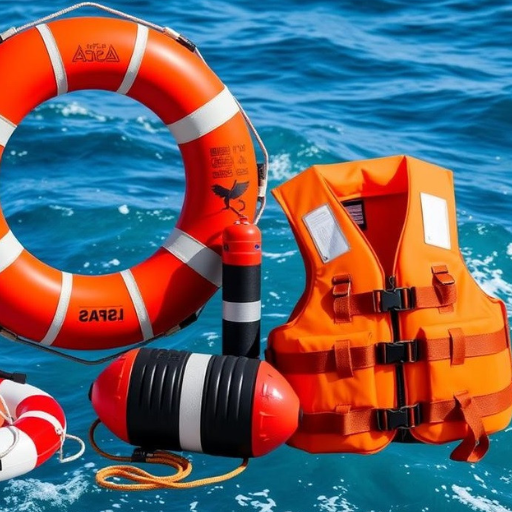
The importance of mobile gadgets in contemporary emergency response systems cannot be overstated as they facilitate timely communication, real-time data capture, and improved coordination amongst first responders. Equipment such as satellite phones, portable GPS, and wireless biometric monitors allow teams to effectively communicate in remote areas or regions where the infrastructure has been damaged. Drones with thermal sensing cameras can conduct aerial scans, which makes it easier for responders to find victims or evaluate the scope of destruction quickly. Portable medical devices such as automated external defibrillators (AED) and ultrasound machines are handy for on-site medical evaluation and life-saving procedures. Using these items reduces response times, increases situational awareness, and significantly improves the outcomes of emergency operations.
The Rise of Portable Lifeboats and Life Rafts
In my opinion, advancements in safety equipment, especially with the introduction of collapsible lifeboats and life rafts, have dramatically improved the chances of survival in dire situations. With modern approaches to safety, these items can be deployed easily during an emergency to save lives. The system can conveniently store itself in a compact package and works exceptionally well under extreme pressure. These portable systems come with self-righting mechanisms, means for water storage, medical kits, and signaling tools, improving survival chances until help arrives. The innovations mark a shift towards the use of modern-day materials and technology that can withstand life-threatening conditions.
Using Drones for Quick Survival Missions
In my opinion, incorporating drones into short-notice search and rescue operations has transformed the approach towards emergency management. Drones greatly aid during services, monitoring dangerous zones and retrieving trapped persons in remote and rugged areas. These devices, capable of withstanding harsh conditions, such as drones equipped with payloads, thermal imaging cameras, GPS systems, and real-time communication links, offer exceptional situational awareness and operational effectiveness. Average drones employed in search and rescue operations often have payload capabilities ranging from 5-15 kilograms with operational flight ranges of 10-20 kilometers and speeds ranging from 20-40 minutes and more. Such performance characteristics imply that drones are dependable in challenging climatic situations, which is particularly important in appealing situations. From how drones are used in modern-day wait-and-rescue missions, one can conclude that their flexibility and accuracy make them essential devices.
Compact and Inflatable Solutions for Easy Transport
To achieve strong performance in remote areas while remaining cost-effective, a reliable means of transportation is always required during survival missions. My research shows directly inflatable drones and portable drone launch systems as examples. Inflatable drones are collapsible, making them lightweight and easier to transport. Most models weigh under 5kg, have an inflation time of under 2 minutes, and operate up to 10km. Likewise, compact drone launch systems are designed to fold for easy storage, aiding in quick mobilization. These solutions further lessen the logistical burden by making equipment more accessible even in low-performing or high-demand environments.
How Maritime Innovations Are Enhancing Safety Equipment
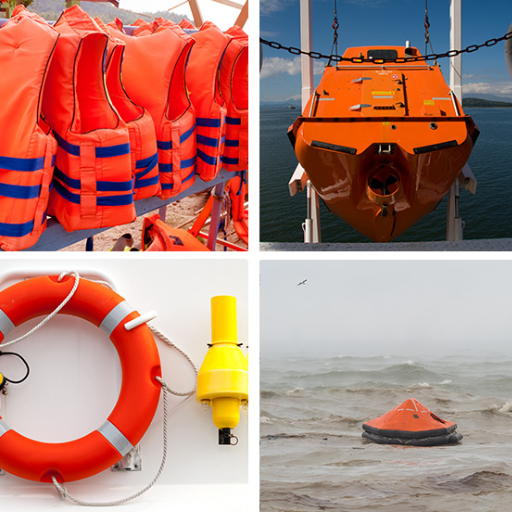
Through the application of new materials and technologies, maritime innovations have created many advancements in safety equipment. Advanced Portable floatation devices include lightweight, buoyant materials and are further enhanced with automatic inflation that happens when a person is submerged in water. Furthermore, personal location beacons (PLBs) with integrated GPS satellites are now a standard commonplace requirement as they allow messages to be sent with pinpoint accuracy of the designated areas to the rescue units. Other developments, such as thermal imager-equipped rescue drones and remote-controlled buoy lifebuoys, greatly increase the efficiency of search and rescue operations by decreasing response times and increasing survivability. All of these measures guarantee that professionals and hobby users in the maritime industries have a higher safety standard.
Advanced Marine Evacuation Systems for Ships
Rapid and efficient marine evacuation systems for ships have been developed to ensure safe evacuations of passengers and crew members during emergencies. These modern MES are built to be deployed effortlessly and rapidly. Modern MES are designed by international regulations, such as the International Maritime Organization (IMO), that ensure safety. Typical modern MES Systems consist of inflatable slides or chutes, liferafts, and specialized leaning mechanisms for launching.
Necessary specifications of MES at a glance include:
- Evacuation Time: Under 2 minutes, the standard according to SOLAS (Safety of Life at Sea) guidelines.
- Volume Capacity: Depending on the layout and size of the vessel, the systems need to be capable of supporting a maximum of 760 persons.
- Tensile Strength: Tough Neoprene-Covered fabrics coated with Polyurethane make these products endure harsh sea conditions better.
- Weather Extremities: -30°C to +65°C to ensure functionality considering extreme climatic conditions.
- Liferaft Stability: Optimal flotation pressure is usually from 0.2-0.25 bars.
- Scope: These multifunctional devices should be adaptable to various vessels, i.e., passenger ferries, cruise ships, or cargo ships.
These systems undergo testing against specific performance criteria, such as stability under heavy seas and impact resistance during deployment. Progressive MES design innovation emphasizes dependability, automatic control, evacuation speed, and overall enhanced safety and security in maritime operations.
Importance of Life-Saving Technology in Maritime Contexts
Given my position as a specialist in maritime safety, I understand the importance of life-saving technologies in preserving lives at sea. The maritime environment is unpredictable, and stormy weather and mechanical issues can be problematic. That is why systems such as Marine Evacuation Systems (MES) exist. They guarantee that evacuation will be done quickly and efficiently and will provide balance within the chaotic environment. Using rigid materials and harsh testing, these technologies minimize risks and enhance survival rates, all of which showcase dedication to the innovations and safety standards within the maritime industry.
Understanding the SOLAS Convention and Compliance
The SOLAS (Safety of Life at Sea) Convention, under the International Maritime Organization (IMO), has developed comprehensive regulations to protect life at sea. Practicing practical compliance with SOLAS means meeting the standards concerning the ship's construction, fire protection, lifesaving appliances, and emergency actions. Important regarding placement of Marine Evacuation Systems (MES) is that they, according to Chapter III, must be capable of operating under a minimum vessel inclination of 20° for evacuation. Also, lifeboats must be available capable of free-fall so these parameters can withstand the impact of the water. Furthermore, carrying out onboard drills and inspection and maintenance of safety equipment is necessary for alignment with SOLAS standards. Compliance mitigates risk but emphasizes adopting a positive approach toward maritime safety and operational reliability.
What Are the Latest Breakthrough Technologies in Life-Saving Devices?
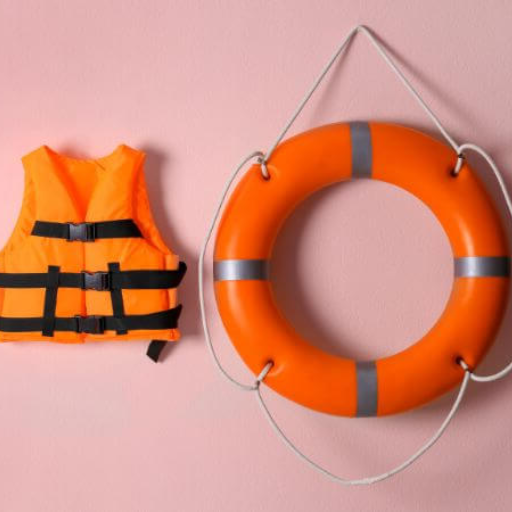
Recent developments in saving devices have presented new methods for improving sea safety measures. One of the more notable advancements is the availability of Wi-Fi-equipped life jackets, which can also transmit automatic distress calls, thus making it possible to take faster rescue action. Further, inflatable life rafts are now provided with improved thermal insulation and self-righting devices, which may help facilitate survival during highly adverse conditions. The other important novelty is the use of search and rescue autonomous drones, which can promptly find survivors with the help of AI-guided navigation and thermal cameras. All these advances together make rescue operations more efficient, speed up response time, and broadly improve the possibilities of survival during sea accidents.
Innovative Safety Equipment for Ships and Passengers
The advancement of systems used for safety equipment for ships and their passengers continues to be developed using new technology. Modern fire detection and fighting measures like water mist technology have been deployed, which controls and conveys fires without further damage. Ships also possess emergency evacuation aids like inflatable escape slides and advanced survival craft, which are kept on standby for instant use. Moreover, a new wearable device, such as a smart wristband, tracks passengers in real-time, increasing accountability during emergencies. All these improvements are geared towards averting accidents and guaranteeing immediate and orderly action if an issue arises for everyone’s safety on the ship.
Smart Life-Saving Gadgets for Everyday Use
The advancement of technology in the form of smart life-saving devices has dramatically improved personal safety. Products like portable smoke detectors like the Airthings View Plus ensure constant air quality monitoring, swiftly identifying hazardous gases, including carbon monoxide. Most of them can connect to mobile phone applications, allowing instant notifications and control. Panic alarms in wearable devices with GPS tracking are especially useful in dire emergencies. Their small form factor and long battery life, often exceeding 24 hours, enhance their practicality during everyday use. As for personal use of external automated defibrillators, the Philips HeartStart AED is distinguished by its voice guidance, intuitive features, light weight of approximately 3.3 lbs., and practical battery life, enabling its effortless use by non-medical personnel in critical situations. These devices perfectly represent how far technology has progressed in aiding personal safety, ensuring that people are always prepared to react swiftly in uncertain cases.
The Future of Life-Saving Technology in the Modern World
Combining artificial intelligence (AI), the Internet of Things (IoT), and sensor technology promises to transform healthcare profoundly. For example, AI enables real-time patient data analytics which can spot critical conditions like heart attacks and strokes before they happen. Such systems utilize extensive datasets to reveal patterns often invisible to human assessment, thus improving the speed and precision of medical diagnoses.
Innovations in wearable health monitors that use biosensors are becoming more advanced and efficient. These allow for tracking vital signs such as pulse rates, blood pressure readings, and oxygen levels around the clock. Some newer versions are even IoT-enabled, transmitting data directly to physicians. This allows for more proactive measures in healthcare. For example, the Fitbit Sense devices can monitor ECG and have a positive predictive value for early arrhythmia detection of approximately 95%.
Systems that blend with robotics are progressing further into new frontiers in emergency responder domains. Thermal drones with GPS tracking can now accomplish medical supply deliveries to remote or disaster-affected regions with utmost precision. Some models come equipped with payload capacities of 5 kilograms while boasting an operational radius of 20 miles, guaranteeing the rapid delivery of essential interventions needed as quickly as possible.
Advancements in automated external defibrillators (AED) is another unprecedented technology. Future generations of AEDs are expected to include a learning-based machine for voice instruction, thus minimizing response time. Most impending models will also incorporate self-diagnostic functions that ascertain operational capacity readiness at all times. For instance, shallow prototypes utilizing lithium-ion batteries have operational standby times that exceed five years, confirming dependability.
Lastly, developments in material science predict the invention of advanced lightweight and durable personal protective equipment (PPE) integrated with smart sensors. Smart sensors can detect the presence of hazardous substances like toxic gases or biological contaminants within seconds, providing life-saving alerts to the user in high-risk situations. The next generation of PPE might use nanoengineering coatings that will repel contaminations and maintain the user's comfort and breathability.
The merging of these technologies portrays that the focus on accessibility, systems intelligence, and constant connectivity will characterize the future of saving innovations. These trends are highly effective in lowering the response time and enhancing the outcomes of emergencies, a significant advancement in these sectors.
How to Ensure Your Life-Saving Equipment is Ready for Any Emergency?

Regular maintenance, correct storage, and testing of your life-saving apparatus improves its functionality and effectiveness, making it easier to use during an emergency. To start, create a strategy to routinely check for wear, damage, or malfunctions in critical components. The optimal functioning of the device also requires battery replacement, sensor recalibration, and firmware updates. Steps three and four involve storing the equipment in a clean, dry, and accessible area to reduce degradation while facilitating quick retrieval. Sooner or later, regular operational testing must be carried out to always be prepared to function under emergencies. More advanced tests that resemble real-life scenarios can be simulated where necessary. Regular adherence to these steps is what guarantees maximum effectiveness.
Regular Maintenance of Life Rafts and Life Jackets
Maintaining life rafts and life jackets involves several critical steps to ensure they remain functional and compliant with safety standards.
Life Rafts
- Inspection Frequency: Perform thorough inspections every 12 months or as the manufacturer recommends.
- Storage Conditions: To prevent material degradation, store in a dry, temperature-controlled environment, with an ideal range of 32°F to 95°F (0°C to 35°C).
- Gas Inflation System: Check the integrity of the CO2 cylinders, ensuring they meet weight specifications and are corrosion-free. Replace cylinders if the weight deviates by more than ±5%.
- Sea Anchor and Survival Equipment: Verify the presence and condition of the sea anchor, emergency repair kits, signaling devices, and first-aid supplies. Replenish or replace expired items immediately.
- Buoyancy Tubes: Conduct leak tests to identify punctures or weakening in the buoyancy compartments and repair damages as needed.
Life Jackets
- Visual Inspection: Examine the outer fabric and straps for fraying, tears, or UV damage. If these signs of wear are evident, replace them.
- Buoyancy Material: Test foam integrity in inherently buoyant life jackets annually. For inflatable models, perform pressure tests to ensure the inflation bladder retains air for the recommended duration, typically 8–12 hours.
- Carbon Dioxide Cylinders: Inspect the cylinders for corrosion and confirm the activation mechanisms, such as manual pulls or automatic inflators, function properly. Replace cylinders after discharge or according to the manufacturer’s lifespan guidelines.
- Reflective Tape and Whistles: Ensure reflective tape remains securely attached and highly visible. Test the attached whistle for audibility and replace it if it is defective.
Following these technical parameters ensures that life rafts and life jackets remain operationally ready and meet regulatory safety standards, such as those set by the SOLAS Convention or the U.S. Coast Guard. Maintenance activities should always be recorded for audit and compliance verification.
Preparing an Emergency Backpack with Essentials
While making an emergency backpack, I needs to be prioritized first. Non-perishable food and water are must-haves in an emergency and must last at least 72 hours. First aid kits, multi-tools, and flashlights with spare batteries all serve important medical and practical purposes. Important documents accompany a spare of clothing, a portable charger, and an emergency blanket, all kept in waterproof storage: hand sanitizer, wet wipes, and a whistle for alerting all fall under hygiene items. Finally, I make sure that the backpack is kept lightweight and understanding. I understand that it is essential to regularly revise the items packed to ensure versatility in being ready for various situations.
Creating a Preparedness Plan for Home and Travel
Your outline for a communication plan for your home and travel should include the anticipated risks, an outline of required supplies, and specific strategies that triage safety and continuity of operations in emergencies. As a first responder, I focus on maintaining an emergency kit at home that contains a water supply of at least 1 gallon per person per day for three days, flashlight batteries, a first aid kit, and non-perishable medication. Important documents are also kept in waterproof containers while reviewing escape routes and shelter options in couriers of evacuation.
While traveling, I cover compact emergency kits for the destination and the planned communication device, ensuring accessibility. In addition, local points of emergency contact must also be reachable. The bounding parameters include a power bank not smaller than 10,000 mAh to charge devices numerous times, 72 hours of cash in smaller denominations, and the most recent updates of the adopted policies, ensuring the plan triaged new risks.
References
- Interesting Engineering - 9 Life-Saving Gadgets Everyone Should Know About
- BuzzFeed - 29 Life-Saving Products
- Empowered by Ashley - Top 10 Life-Saving Personal Safety Gadgets
Frequently Asked Questions (FAQ)
Q: What are some breakthrough life-saving gadgets available in the modern world?
A: Breakthrough life-saving gadgets today include advanced immersion suits, innovative rescue boats, and high-tech liferafts and lifeboats, all designed to comply with international requirements contained in safety regulations. These gadgets are mandatory per specific technical requirements to ensure the safety of people in distress.Q: How do life-saving gadgets help eliminate risks during emergencies?
A: Life-saving gadgets help eliminate risks by providing immediate and efficient solutions during emergencies. For instance, lifeboats and life-jackets are essential in rescuing individuals from capsized ships, while fast rescue boats can quickly reach people in distress. These devices are designed to meet international life-saving appliance standards, ensuring maximum safety.Q: What protective features are included in modern life-saving gadgets?
A: Modern life-saving gadgets come with various protective features, including immersion suits that offer thermal protection, parachute flares for signaling, and waterproof lock systems to keep essential items safe. These features comply with the specific technical requirements set by international safety standards.Q: How do life-saving gadgets contribute during a road trip?
A: Life-saving gadgets such as emergency windshield breakers and seatbelt cutters are paramount during a road trip. These tools can be crucial when passengers need to evacuate quickly after an accident. Additionally, portable safety kits, which may include spray solutions for fire suppression, are a staple for road safety.Q: What life-saving gadgets should travelers carry to comply with international safety standards?
A: Travelers should carry life-saving gadgets such as life jackets, immersion suits, and personal locator beacons to comply with international safety standards. These gadgets are designed to activate emergency signals and provide thermal protection, which is essential for safety in various environments.Q: Why is it important for ships to carry life-saving appliances?
A: It is crucial for ships to carry life-saving appliances, including lifeboats and liferafts, as they are mandatory as per international requirements contained in maritime safety regulations. These devices are critical to making a ship compliant with safety standards and ensuring the survival of passengers and crew in emergencies.Q: How does using a protective wallet enhance safety during travel?
A: A protective wallet, especially one with RFID-blocking technology, enhances safety during travel by securing credit card information against unauthorized access. This is vital as it prevents identity theft and ensures personal data remains confidential, a growing concern in today's digital age.Q: What role do life-saving gadgets play in international rescue operations?
A: In international rescue operations, life-saving gadgets are crucial in providing efficient solutions to rescue missions. Fast rescue boats and life jackets are used to respond quickly to emergencies. At the same time, immersion suits and other life-saving appliances differ in their specific functions to meet the needs of various rescue scenarios.Q: Can you explain how spray technology is integrated into life-saving gadgets?
A: Spray technology is integrated into life-saving gadgets like fire suppression systems. These systems use spray mechanisms to quickly extinguish fires, which is crucial in preventing the spread of fire on ships and other enclosed spaces, thereby protecting lives and property.Q: What are the mandatory life-saving gadgets per international maritime safety regulations?
A: Mandatory life-saving gadgets as per international maritime safety regulations include lifeboats, immersion suits, liferafts, and life jackets. These gadgets are designed to meet the specific technical requirements necessary for ensuring the safety of passengers and crew on ships.







 Login with Google
Login with Google Login with Facebook
Login with Facebook